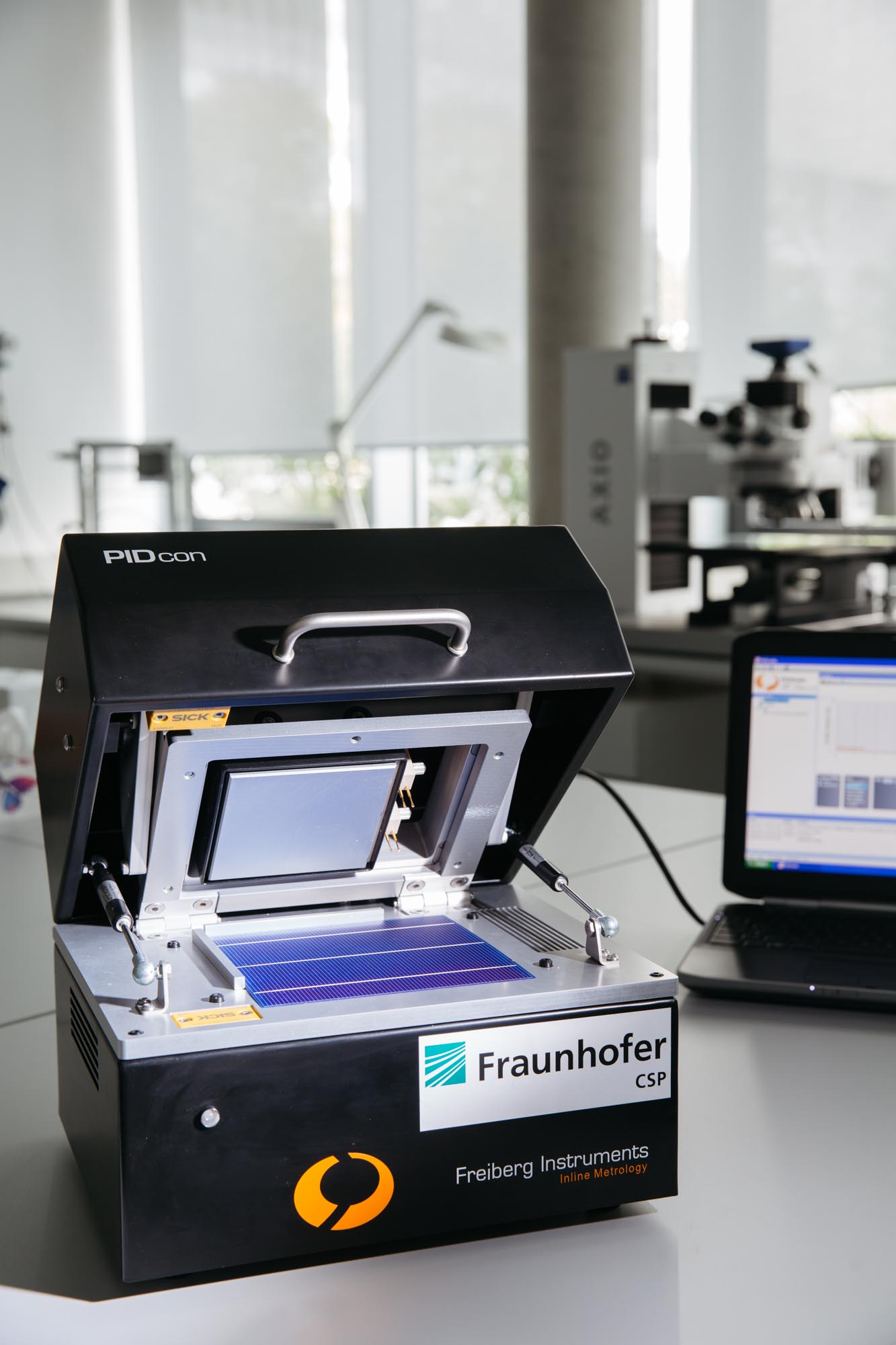Fraunhofer CSP and Freiberg Instruments are conjointly developing a test procedure for PID
The Fraunhofer Center for Silicon Photovoltaics CSP and Freiberg Instruments Metrology Solutions have developed a test to measure the PID susceptibility of solar cells and modular components. Operations went hand in hand: The Fraunhofer CSP is responsible for the method which will be applied in the measuring device which was developed by Freiberg Instruments.

Central to the method is the investigation of power losses of solar modules which appear as a result of negative voltages in module installations with high system voltage. This effect, so-called potential-induced degradation (PID), causes a yield-reducing decrease in efficiency. The scientists at the Fraunhofer CSP now use the new method as a diversifiable material test to measure the PID susceptibility of solar cells, glass and films. The procedure is distinguished by not requiring any laborious manufacture of test modules or the expensive operation of climate chambers. Freiberg Instruments is developing this procedure reach to "industrial maturity", whereby especially the application in process control will be assured.
Besides, the method offers the opportunity to examine the solar cell microscopically after the PID stress test: This enabled identification of the cause of shunts appearing in PID. These shunts result from crystal defects within the silicon, referred to as stacking defects. They possess lengths of only a few 100 nanometers and a thickness of just one atomic layer. By applying high-resolution nano-EDX analytics in a transmission electron microscope, high concentrations of sodium were then detected in the planes of stacking defects. This way, the researchers, who were working together with the Max-Planck Institute of Microstructure Physics, found out that the integration of sodium atoms makes the stacking defects in the silicon crystal electrically conductive and thus created the shunts. An understanding the basic phenomena that accounts for the PID effect on the nanoscopic level helps to protect large solar modules reliably against detrimental power losses.
The Fraunhofer CSP conducts applied research in the subject fields of silicon crystallization, solar module technology, and solar wafer production. It develops with highest competence new technologies ranging from ingots to module manufacturing and is concerned with the development of new materials along the entire value creation chain. A new focus is the assessment of solar cells and modules as well as the electrical, optical and microstructural characterization of materials and components. To this end, highly modern research and analysis tools are available.
 Fraunhofer Center for Silicon Photovoltaics CSP
Fraunhofer Center for Silicon Photovoltaics CSP